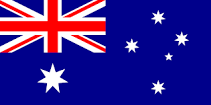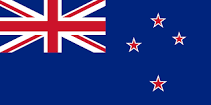After studying the Taigyoku kata for their first two grades, Saifa was the logical choice to follow. Compared to the simpler patterns of the Taigyoku kata, many kata can be very complex and often have well over 30 movements. Saifa has just 20 counts and follows a simpler embusen (performance line). This made for Saifa to be a good stepping stone from the Taigyoku to the more difficult kata.
Saifa is a world renown kata and hails from the Okinawan city of Naha. Like all kata from Naha, it has a heavy influence from Southern China. There is much speculation over who first introduced Saifa to Okinawa. Many agree that it was introduced by Kanryo Higaonna who traveled to Southern China in 1867 to study martial arts. Upon returning to Okinawa 13 years later he formed Naha-te, which blended techniques of Okinawa-te with Chinese Kung-fu.
Other scholars point out that it was more likely one of Higaonna’s top two students, Chojun Miyagi (founder of Goju karate) who developed the kata after traveling to China himself to study after his master’s death. They back this up by the fact that Higaonna’s other top student, Juhatsu Kyoda (founder of To’on Ryu) never taught Saifa.
Saifa kata is comprised of two kanji ‘Sai’ and ‘Ha’, (note that the Okinawan pronunciation of Ha is Fa). The kanji ‘Sai’, as in kata Geki-sai, is to ‘smash’. The second kanji ‘Ha’/’Fa’ means to ‘tear’. This can be translated as, ‘Smash and Tear’. The reasoning behind this name came from its bunkai (application). Most kata deal with a defence from a grab by reversing the grab with a lock. Saifa however deals with numerous situations where one tears themselves free from an attacker’s grip then counters with devastating punches, back-fists or hammer-fists
Saifa: Summary Points
- Hails from the Okinawan city of Naha
- Most likely developed by Chojun Miyagi (founder of Goju) after combining his studies of Naha-te and Chinese Kung-fu.
- The first ‘Goju’ styled kata of GKR, it incorporates a number of flowing moves, circular techniques and devastating counter-attacks.
- Meaning: ‘To smash and tear’, depicting the bunkai that involves tearing ones self from an attacker’s grip then countering with devastating punches, back fists, and hammer fists.
- The ‘Sai’ (to smash or destroy) is the same character as in kata, Bas’Sai’-dai and Geki-‘Sai’. The ‘Fa’ (to tear) is the same character as in kata Kururun’Fa’.



